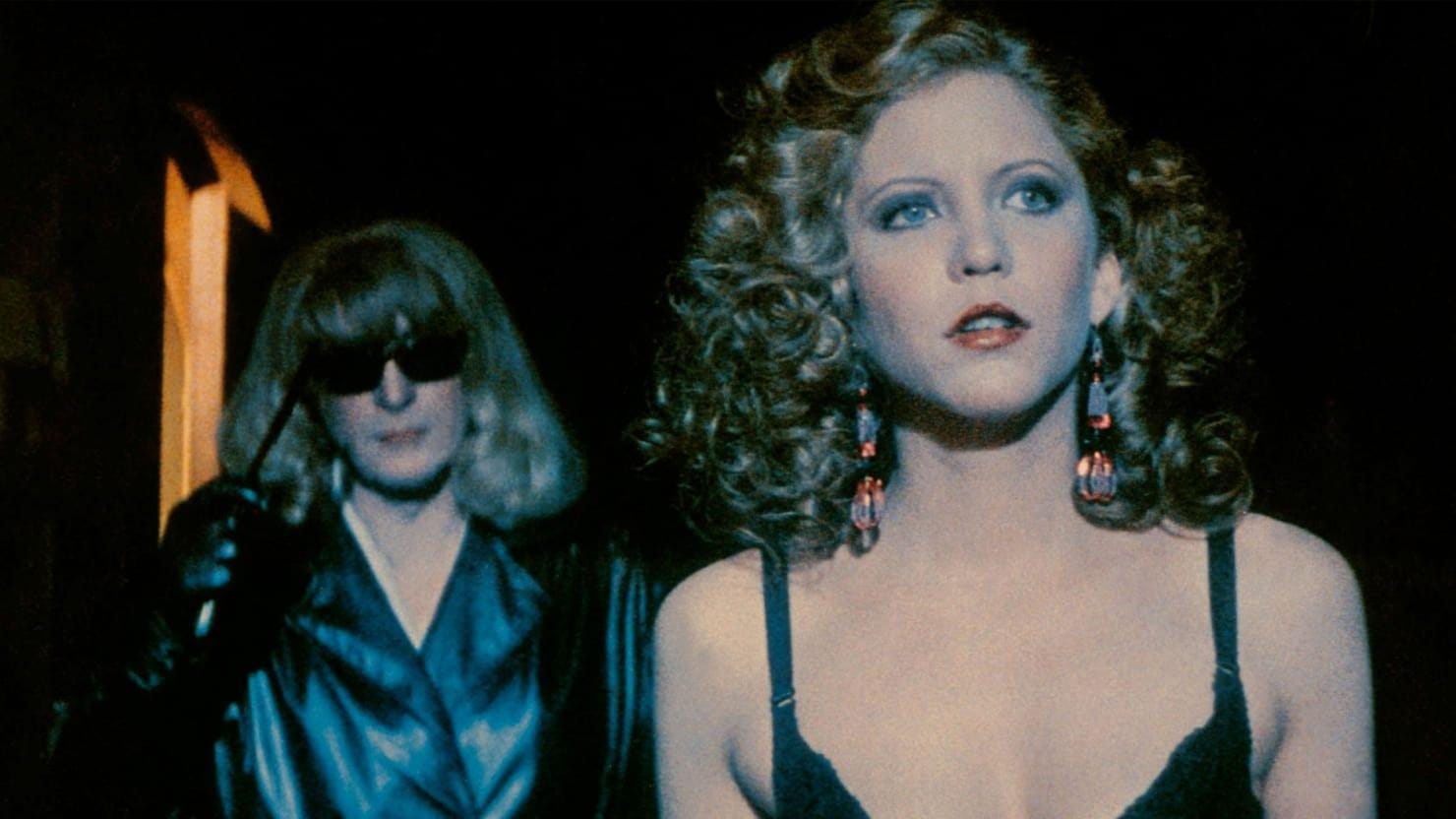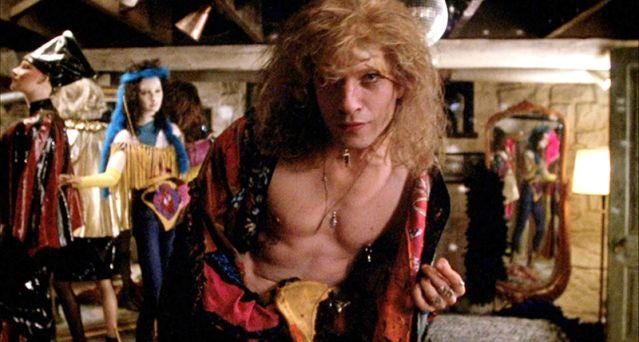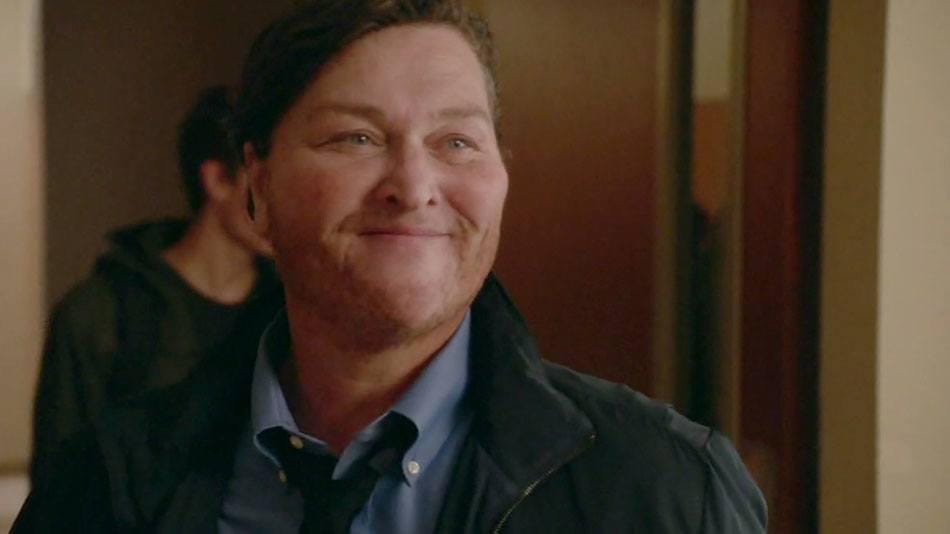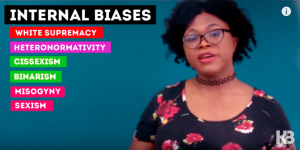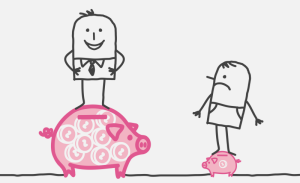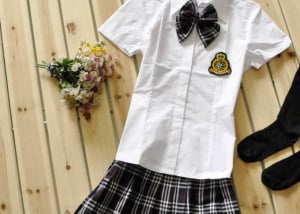
Person sketching a storyboard.
This article was originally published on Woke and republished here with the author’s permission.
What’s the bottom line? For trans characters in film and TV, roles seem to follow these same boring formulas:
- Their storylines are either entirely about being trans or are transition-focused.
- They are usually played by cis people, conveniently making it so that the trans character isn’t “passing” enough for cis viewers to feel threatened by transgenderism.
- Or their characters are used as punchlines, villains, or psychopaths.
Seeing as I could pigeonhole trans characters into only 3 categories and be accurate probably 99% of the time, I give Hollywood a 10/10 for predictability and an 11/10 for how much trans folks are sick of this bullshit.
Over the past year and a half, more and more articles are surfacing critiquing how trans roles are written and cast in mainstream film. Why?
Because as much as queer television is expanding, it never lasts long and is eventually replaced by the same damn thing that results in the same oppression and violence trans and queer folks have endured for literal centuries.
Don’t believe me? GLAAD actually released a legit research report tracking LGBTQ characters in film and TV in 2016.
Despite the visible increase in LGBTQ characters, analysis of their death ratios and two-dimensional character arcs spoke to a less positive conclusion.
Hollywood has a hell of a long way to go still before they make even the slightest dent in how their reproduction of negative tropes affect transphobia and homophobia within the general population.
This can only be achieved through consciously positive and accurate media representation of trans folks. Which honestly, should first start with giving trans roles back to actual trans people.
The Oscar Worthy
1. Jared Leto in Dallas Buyers Club, 2014
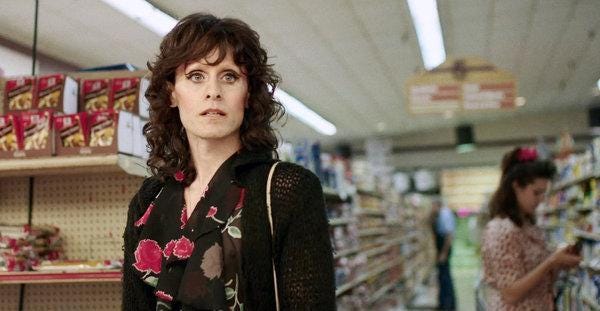
Leto won the Oscar for Best Supporting Actor for his performance as a trans woman struggling with HIV showing us that critical acclaim is reserved for cis people, and that at the end of the day, trans folks are really just cis people in makeup and a dress.
His character is a cocaine addict too, which merely reinforces audience’s impressions of trans folks as criminals and mentally unstable, and untrustworthy.
As the film’s source of comic relief as a flirty sex worker, the role plays into almost every trans stereotype in the book: trans folks are prostitutes, punchlines, are really just men, and are desperate criminals with lots of issues.
Marketed as a true-story feel film, audiences have no choice but to accept this as a true trans narrative. Because upwards of 85% of what the general population understands about trans people derives from film and media, if audiences are led to believe these narratives are factual representative of trans people, this is the extent of what their scope of Trans will be.
Presenting damaging tropes of trans people as real life merely feeds the ignorance that fuels violent transphobia and homophobia.
2. Eddie Redmayne in The Danish Girl, 2015
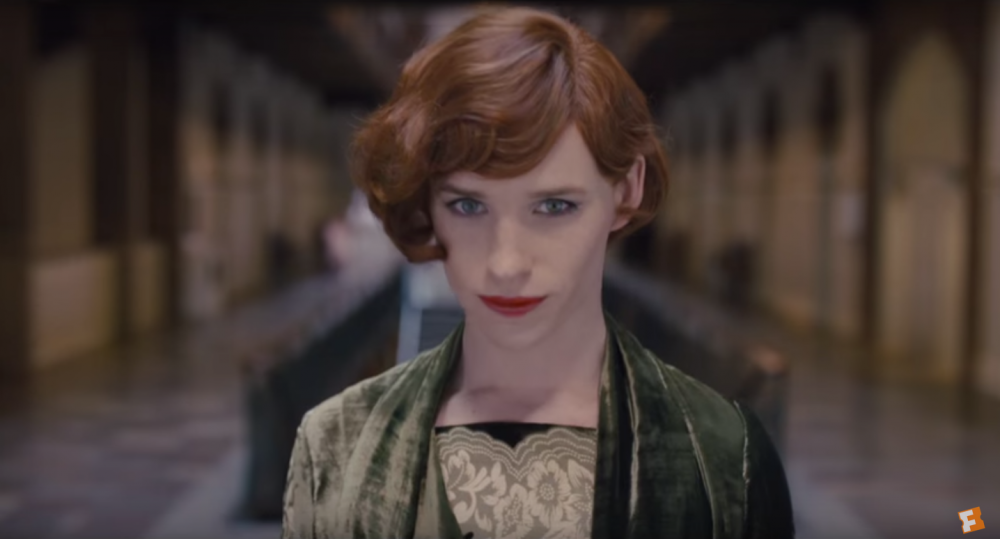
Well, barring the fact that the entire film is based on a fictional novel about trans people in history written by a cis, white man, The Danish Girl centers on the story of Lili Elbe, considered to be one of the first people to ever undergo sexual reassignment surgery.
With the historical element, the marketing for the film relies heavily on that “true-story” association, lending validation to whatever trans tropes it takes advantage of, affecting audience’s inaccurate understanding of trans people.
Again, critically acclaimed and nominated for several Oscars, this particular attentiveness to the film merely validates the trend of using transitioning as the model of what trans stories should be about.
More importantly, focusing on transitioning consistently shows a “before” and “after”, which manipulates the audience to never fully believe in the authenticity of trans identity.
All the audience has been exposed to are trans people “hiding their true selves” or being conflicted and “trying out” being trans before ultimately “deciding” to transition. Constantly depicting the tr reproduces the notion that trans folks are deceitful, hiding who they really are, “confused”, or that trans people are just men/women who “used to be” women/men. Identity struggle is then taken out of context and reduced to mere plot twists or character conflicts.
Constantly depicting the transition narrative reproduces the notion that trans folks are deceitful, hiding who they really are, “confused”, or that trans people are just men/women who “used to be” women/men. Identity struggle is then taken out of context and reduced to mere plot twists or character conflicts.
By creating roles for trans characters that are only about their trans identity or about their struggles with transitioning, it makes it harder and harder for audiences to view trans people as complex individuals.
Not all transness is about surgery or putting on make-up and a dress. By allowing cis people to play trans roles, it also sends the not-so-subtle message that transness is a costume that can be taken on and off and occupied for entertainment.
3. Jeffrey Tambor in Transparent, 2014-Present
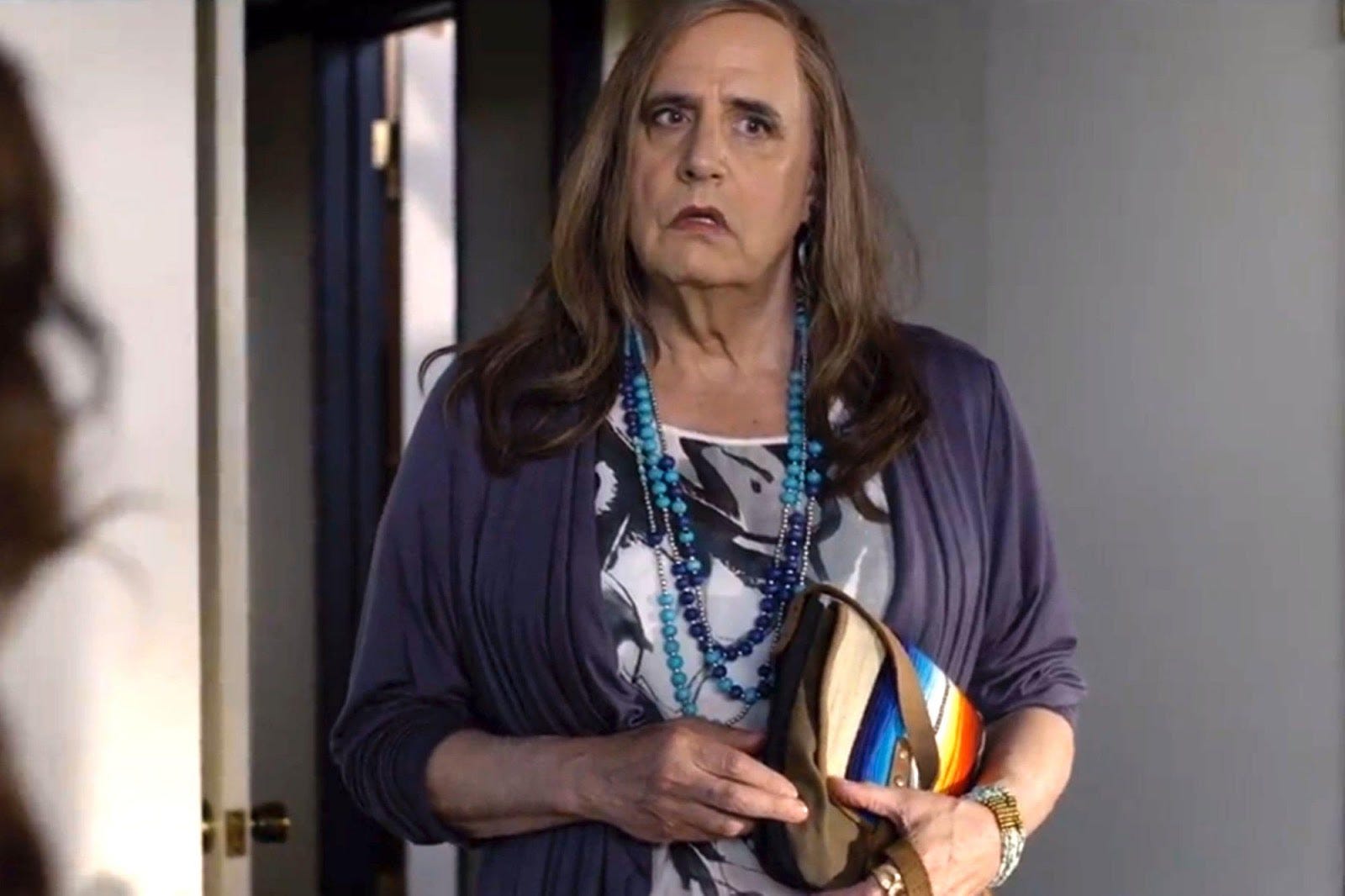
Ok, he didn’t win an Oscar, but it was an Emmy — in fact, his performance been recently nominated again for the 2017 Emmy’s.
The only thing that separates good ol’ Jeff here from the rest of the pack is that he isn’t trying to give himself a pat on the back for his “method-acting” or his great talent.
Jeffrey Tambor is a cis, white man playing a white trans woman on TV whose storyline is about — yup, you guessed it! — her transition, but during his acceptance speech, he openly implored writers and directors to write trans roles and cast actual trans actors.
Transparent is an amazing program, but it does not absolve it of the fact that it’s just another story about a white trans woman in transition played by a cis man.
When we leave out the stories of trans people of color, we fuel the lack of understanding and the fear of trans people of color, who are the very people who are being targeted, murdered, and sexually assaulted in real life.
The Psycho Murderers
4. Michael Caine in Dressed to Kill, 1980
This erotic thriller is literally an entire film about how being trans is a mental disorder that leads to unstable, psychotic violence due to gender insecurity. It may not say it outright, but the plot follows a secret serial killer who turns out to be caught between two identities.
Michael Caine portrays a psychologist-murderer who ends up institutionalized for being unable to control his apparent gender dysphoria.
“Threatened” by the sexual attraction his “male side” feels for women, his “female side” lashes out and murders his seductresses.
The 80s were apparently unable to comprehend bisexuality or being transgender without pathologizing them and creating murder fantasies fueled by transphobic paranoia.
Remember that it really wasn’t until recently that being transgender was formally removed from the DSM as a mental disorder.
4. Ted Levine in The Silence of the Lambs, 1991
You really didn’t think it was just the 80’s, did you? The Silence of the Lambs is a classic film that anyone who’s ever heard of the word “movie” knows about. Another Oscar winner, this film won in all the main Oscar categories.
Essentially a horror-thriller film about a serial killer who is transgender, and, arguably, bisexual, is a trans woman denied sexual reassignment surgery who skins the bodies of her female victims to wear herself — all the while still being gendered as a man by the entire script.
So basically the film isn’t so trans as to scare off or confuse audiences, but trans enough to blame transness for a motive in murder and insanity.
Over 80% of what the public knows about trans people comes from film and media. Repeat after me: Representation matters.
5. Vanessa Ray in Pretty Little Liars, 2012–2017

In one of the series’s biggest reveals, the evil sociopath that was tormenting, kidnapping, and quite literally torturing the main characters turned out to be transgender.
Though the series never actually has a line directly identifying Cece Drake, or Charlotte Drake, more accurately, as a trans woman, it does take advantage of the confusion and difficulty the characters have in figuring out who their villain is because their villain is trans.
This storyline takes them down endless leads about a child named Charles DiLaurentis, Charlotte’s dead-name. In fact, even long after Charlotte is killed off in the series, she is dead-named so many times, one would think it had to be a joke.
But really it just confirmed that the CW didn’t include this storyline in order to be inclusive of trans narratives. Instead, they merely utilized trans identity as a plot-twist, as deceptive, as secret, and more importantly, as dangerous and insane.
Charlotte was revealed to have been institutionalized and engaging in a knowingly incestuous relationship with her own cousin while keeping him in the dark.
Capitalizing on damaging tropes surrounding trans people for the sake of needing a plot-twist or a scapegoat is a death sentence to trans people everywhere.
This is the exact representation that feeds transphobia and homophobia and justifies the discrimination against, pathologization of, and persecution of trans and queer people.
And then there’s Glee
Now, Glee has been the obsession of many a gay viewer. We do love us some Glee. And for Fox? It was pretty damn progressive to even have canon queer relationships, narratives about hate crime, race, and many other complex identity issues on the show. Despite their
Despite their reputation, however, Glee’s treatment of trans narratives was a huge letdown. And here is why.
6. Dot-Marie Jones in Glee, 2010–2015
Emmy nominated for her role as Coach Shannon Beiste in 2011, 2012, 2013, her character portrayed a woman struggling to have her femininity and desirability validated by the world around her.
As an athletic, forward, and built woman, Beiste as a character represented women who didn’t conform to traditional gender roles or ideas of femininity. The role challenged others to view such women as just as feminine, just as beautiful, and just as valid a form of womanhood.
In Season 6, that entire message and character development was pushed aside for some reason when Fox decided that Shannon Beiste was going to transition to Sheldon Bieste.
Trans characters should be able to have a presence on a show without the sacrifice of positive representations of gender nonconformity, and strong, female character arcs.
And again, could’ve also just introduced an actual trans actor for a trans character. At least it’s a cis woman instead of a cis man this time? …Nope. Still not good enough.
7. Alex Newell in Glee, 2010–2014
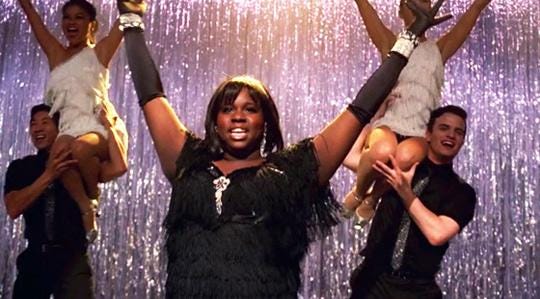
Holy moly! Not cis and not white?? It’s a miracle!!!! Except, it’s also not.
The character of Unique Adams on Glee was a bold, flamboyant student fighting fiercely to express himself the way he wanted to. A good idea, but came up short.
Unique Adams became little more than a substitute for the only other black main character on the entire series who had graduated at that point. Loud, sassy, and assertive, the character had little depth that went further than being bullied for his transness.
Fox’s way of filling their diversity quota, though including a representative that is a trans person of color at all is jaw dropping, Unique still isn’t what trans folks need on television.
Basically Hollywood sucks, so what now?
Who here remembers what the Bechdel test is? For those of you who don’t know, the Bechdel test is a list of requirements a work of fiction must pass in order to indicate active, positive female representation.
Named for famous comic book writer, Alison Bechdel, the test first appeared in her comic strip, Dykes To Look Out For, to call attention to gender inequality in fiction.
It seems as if Hollywood would benefit from a checklist that indicates whether or not they are being trans positive or not.
So, readers, allow me to introduce Hollywood’s new trans test:
1. Does your story have trans or non-binary characters in it?
Fix that. It should.
2. Should they be a main character?
That would be nice and would help a lot, but also remember that Waitress #2 could be cast as a trans actor and the world won’t actually end.
3. Do their storylines focus on their transition/are they just “the trans character”?
Actually add depth to trans characters. There is more to trans lives than just gender and sexuality.
4. Does being trans become a plot twist or joke?
Don’t do it. Ever.
5. Is your trans character played by a cis person?
It shouldn’t be a revolutionary idea that trans actors should be the ones to be the ones to portray their own communities’ narratives.
Having an actual trans person portray your trans character will give more authenticity to the performance and bring to the screen actual diversity in what trans can and does look like.
Also, trans people need opportunities to land big roles, they need work to support themselves — because guess what? Being an artist is difficult when you’re a victim of systemic poverty and discrimination.
6. Is your trans character a person of color?
We literally can’t tell you enough how tired we are of seeing white people on screen in general.
But white trans characters do not represent all of us. Write trans characters of color. Please. We are getting murdered, and we’d like to be humanized on screen for once.
7. Are all of your trans characters villains, insane, unstable, prostitutes, or addicts?
Put your disgusting tropes away. All it does is get us hurt, ostracized, and killed, and by the way, trans people are way more than that.
There’s your checklist for now. Now get to writing!
[do_widget id=’text-101′]
Terran Pierola (pronouns they/them) is a genderfluid, mixed race, queer boi. Working for such projects as Boi Society, SOULE, EROC, & QGCon, their experience focuses on creating supportive and educational resources for gender non-conforming, trans, and queer folks; and queer fashion, film, and pop culture. They graduated from UC Berkeley with a BA in English and currently live in Los Angeles.
Search our 3000+ articles!
Read our articles about:
Our online racial justice training
Used by hundreds of universities, non-profits, and businesses.
Click to learn more


